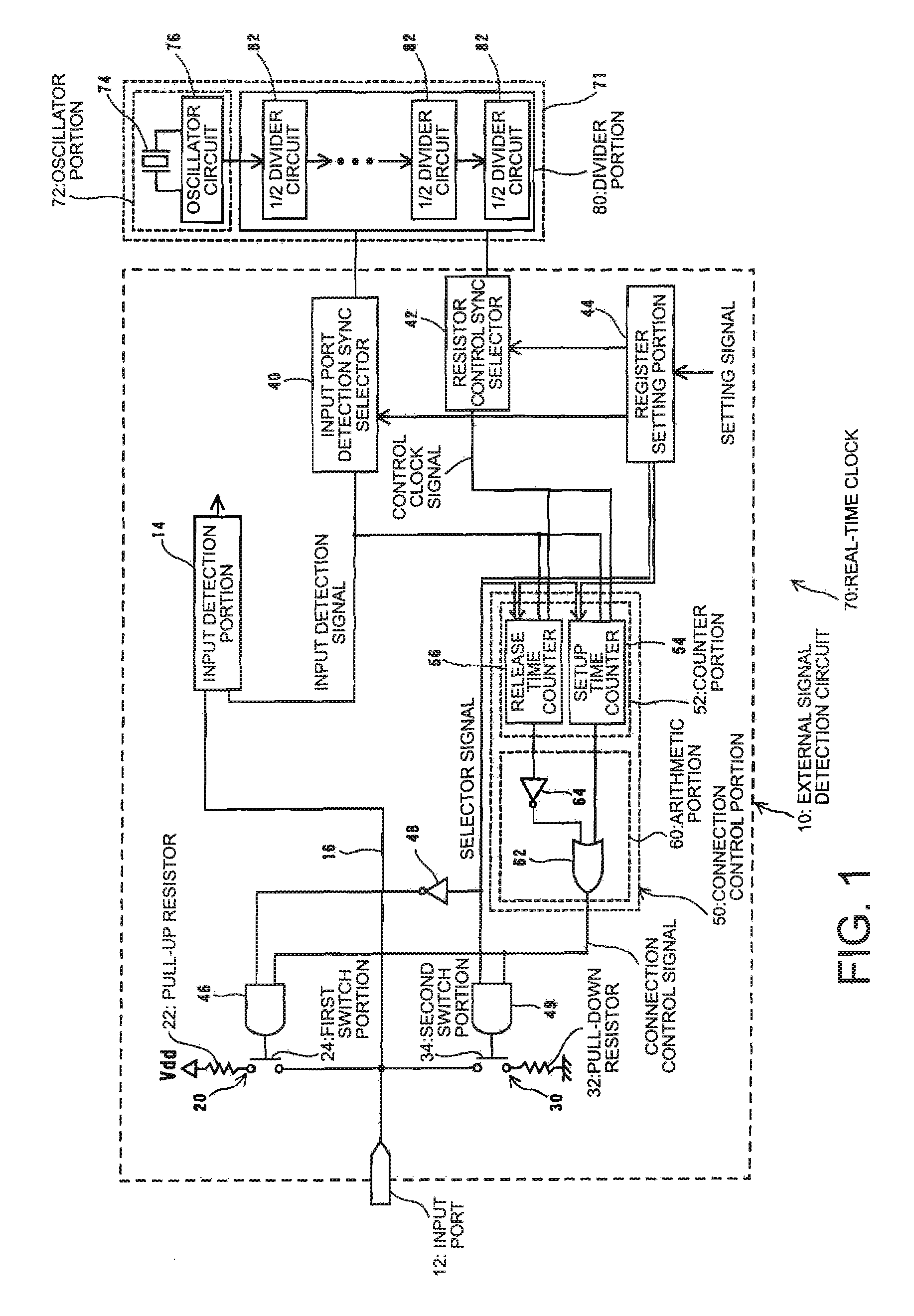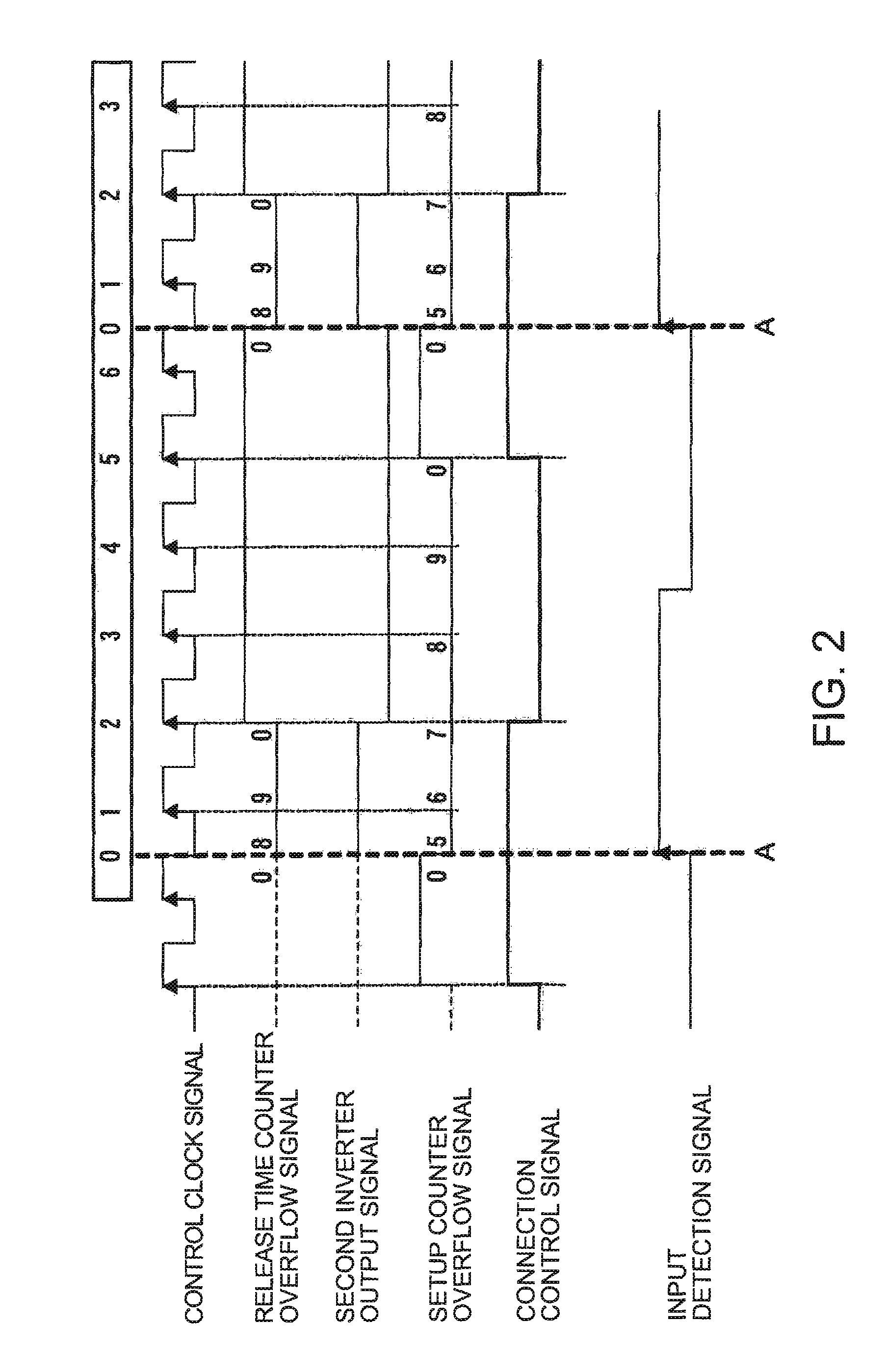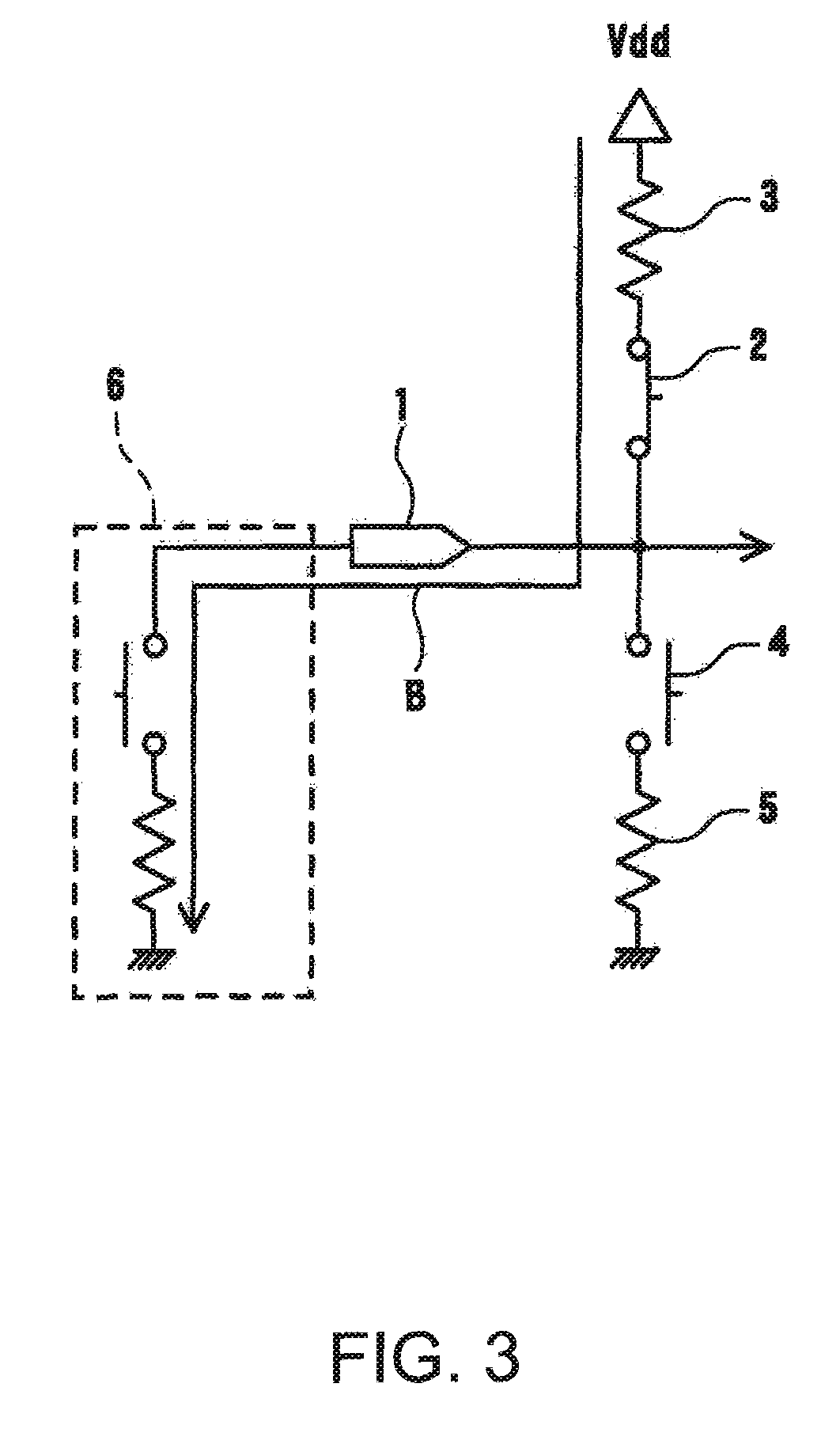External signal detection circuit and real-time clock
a detection circuit and external signal technology, applied in the direction of generating/distributing signals, instruments, pulse techniques, etc., can solve the problems of increased cpu resource occupancy, system performance impairment, and software load, and achieve the effect of high accuracy synchronization of detection
- Summary
- Abstract
- Description
- Claims
- Application Information
AI Technical Summary
Benefits of technology
Problems solved by technology
Method used
Image
Examples
Embodiment Construction
[0024] An external signal detection circuit and a real-time clock according to an embodiment of the invention will be described below. According to the embodiment of the invention, an exemplary embodiment will be described in which the external signal detection circuit is mounted in the real-time clock. FIG. 1 is a block diagram of a principal part of a real-time clock including an external signal detection circuit. An external signal detection circuit 10 includes an input port 12, to which an external signal is inputted. A signal line 16 for guiding the external signal to an input detection portion 14 is connected to the input port 12. An input to the input detection portion 14 is also connected to an input port detection sync selector 40. An input detection signal detecting an input of an external signal to the input detection portion 14 is inputted to the input port detection sync selector 40. The input detection portion 14 may be formed, for example, from a flip-flop circuit.
[0...
PUM
 Login to View More
Login to View More Abstract
Description
Claims
Application Information
 Login to View More
Login to View More - R&D
- Intellectual Property
- Life Sciences
- Materials
- Tech Scout
- Unparalleled Data Quality
- Higher Quality Content
- 60% Fewer Hallucinations
Browse by: Latest US Patents, China's latest patents, Technical Efficacy Thesaurus, Application Domain, Technology Topic, Popular Technical Reports.
© 2025 PatSnap. All rights reserved.Legal|Privacy policy|Modern Slavery Act Transparency Statement|Sitemap|About US| Contact US: help@patsnap.com



